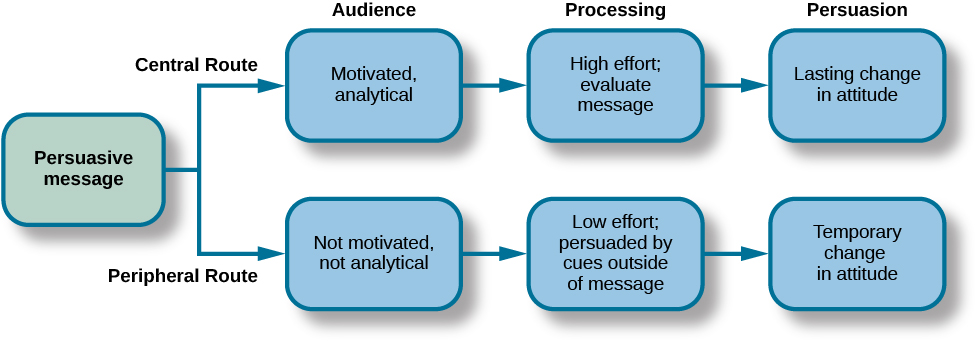| << Chapter < Page | Chapter >> Page > |
Features of the source of the persuasive message include the credibility of the speaker (Hovland&Weiss, 1951) and the physical attractiveness of the speaker (Eagly&Chaiken, 1975; Petty, Wegener,&Fabrigar, 1997). Thus, speakers who are credible, or have expertise on the topic, and who are deemed as trustworthy are more persuasive than less credible speakers. Similarly, more attractive speakers are more persuasive than less attractive speakers. The use of famous actors and athletes to advertise products on television and in print relies on this principle. The immediate and long term impact of the persuasion also depends, however, on the credibility of the messenger (Kumkale&Albarracín, 2004).
Features of the message itself that affect persuasion include subtlety (the quality of being important, but not obvious) (Petty&Cacioppo, 1986; Walster&Festinger, 1962); sidedness (that is, having more than one side) (Crowley&Hoyer, 1994; Igou&Bless, 2003; Lumsdaine&Janis, 1953); timing (Haugtvedt&Wegener, 1994; Miller&Campbell, 1959), and whether both sides are presented. Messages that are more subtle are more persuasive than direct messages. Arguments that occur first, such as in a debate, are more influential if messages are given back-to-back. However, if there is a delay after the first message, and before the audience needs to make a decision, the last message presented will tend to be more persuasive (Miller&Campbell, 1959).
Features of the audience that affect persuasion are attention (Albarracín&Wyer, 2001; Festinger&Maccoby, 1964), intelligence, self-esteem (Rhodes&Wood, 1992), and age (Krosnick&Alwin, 1989). In order to be persuaded, audience members must be paying attention. People with lower intelligence are more easily persuaded than people with higher intelligence; whereas people with moderate self-esteem are more easily persuaded than people with higher or lower self-esteem (Rhodes&Wood, 1992). Finally, younger adults aged 18–25 are more persuadable than older adults.
An especially popular model that describes the dynamics of persuasion is the elaboration likelihood model of persuasion (Petty&Cacioppo, 1986). The elaboration likelihood model considers the variables of the attitude change approach—that is, features of the source of the persuasive message, contents of the message, and characteristics of the audience are used to determine when attitude change will occur. According to the elaboration likelihood model of persuasion, there are two main routes that play a role in delivering a persuasive message: central and peripheral ( [link] ).

The central route is logic driven and uses data and facts to convince people of an argument’s worthiness. For example, a car company seeking to persuade you to purchase their model will emphasize the car’s safety features and fuel economy. This is a direct route to persuasion that focuses on the quality of the information. In order for the central route of persuasion to be effective in changing attitudes, thoughts, and behaviors, the argument must be strong and, if successful, will result in lasting attitude change.

Notification Switch
Would you like to follow the 'Psychology' conversation and receive update notifications?